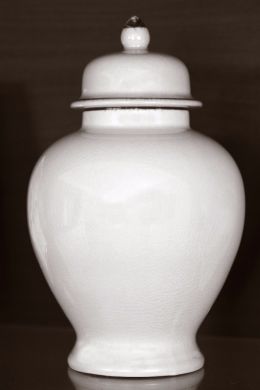 The combination of traditional Christian-derived funerary practice and the rise of both undertaking and embalming during the Civil War have resulted in most people having funerals with their embalmed bodies in caskets, followed by interment in cemeteries. However, you may have concerns about excess land usage or the environmental impact of embalming chemicals. Or you may want to be laid to rest someplace other than a cemetery. If that’s the case, you might want to consider cremation or resomation as alternatives to traditional burial.
The combination of traditional Christian-derived funerary practice and the rise of both undertaking and embalming during the Civil War have resulted in most people having funerals with their embalmed bodies in caskets, followed by interment in cemeteries. However, you may have concerns about excess land usage or the environmental impact of embalming chemicals. Or you may want to be laid to rest someplace other than a cemetery. If that’s the case, you might want to consider cremation or resomation as alternatives to traditional burial.
Cremation: An Old Practice With Modern Methods
Archeologically discovered evidence suggests that humans began cremating their dead as early as 20,000 years ago. Practiced in many cultures around the world, cremation basically involves the burning of a dead body and special handles of the ashes. Sometimes, the departed loved one’s body is ignited and then consumed by flames on a funeral pyre. In the United States, the process is typically carried out using a crematory furnace heated to extremely high temperatures. But in either case, the deceased’s loved ones receive the ashes and then distribute them per the departed one’s wishes.
Resomation: An Eco-Friendly Alternative to Cremation
If you like the idea of cremation but worry about its potential environmental impact, consider resomation instead. Although only one funeral home in Florida currently offers it, this method could soon catch on because it leaves a much smaller carbon footprint than regular cremation. Also called "bio-cremation," it employs heated water and potassium hydroxide to dissolve all bodily tissues except for the bones, which are later crushed into much smaller fragments and then given to the deceased’s family. Because water used in the process is only heated to 350 degrees Fahrenheit, it consumes less energy than typical cremation, which requires temperatures between 1,600 and 1,800 degrees Fahrenheit.
What’s Left Behind
Because your body will be reduced to either ashes or bone fragments, you have a lot of latitude as to where they will be placed. You could have them housed inside an urn. Or, if you want to help nourish new life, you can have them combined with soil in a Bios Urn, a biodegradable container that’s fabricated to allow a tree seed to sprout and grow, or mixed with concrete to form an Eternal Reef starter to help a new coral reef grow in our oceans.
Alternatively, your remains could be scattered in a place with special meaning to you or your family. For example, the ashes of late Nirvana frontman Kurt Cobain were distributed in two places: on the Wishkah River near Aberdeen, Washington, and at the Nangyal Buddhist Monastery in Tibet. And the ashes of Star Trek actor James Doohan were even launched into space on a private rocket! You don’t have to get as creative as these celebrities, but your options are certainly open.
Be Sure Your Executor Knows Your Final Wishes
If you opt for either cremation or resomation, make sure you give specific advanced directives to the executor of your estate. If you don’t, your body will likely be embalmed and prepared for standard burial by a funeral director. This may happen either because your desires were not known until it was too late or your family was overly attached to the idea of a traditional funeral with a body in a casket.
Your Final Resting Place Is Your Decision
If you have reservations about traditional burial, you don’t have to settle. Cremation and possibly resomation remain two viable options, and you have a nearly infinite number of choices as to where to scatter your remains. Make sure your estate’s executor is aware of your final wishes and that you communicate them to your family as well. In the end, it’s up to you to decide how you want to be memorialized.
Add Your Comment